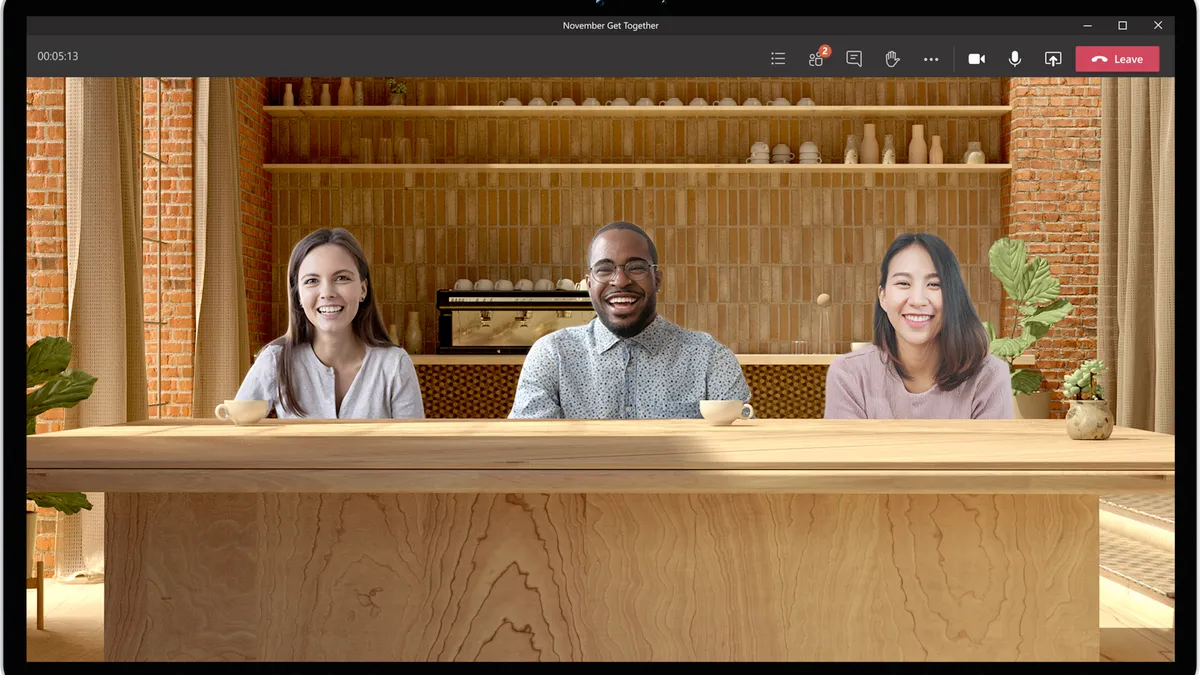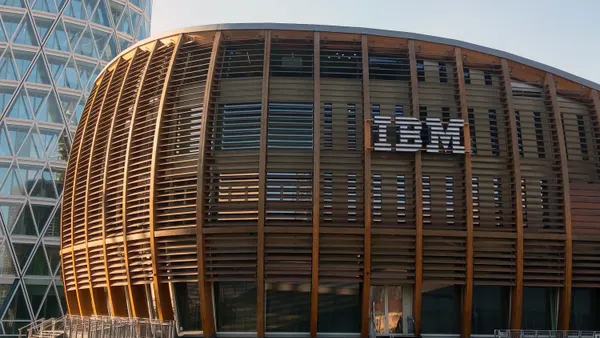Dive Brief:
- In an effort to combat brain fatigue associated with digital meetings, Microsoft Teams added "Together Mode," a single-background simulation, to its videos, the company announced Thursday. Together Mode uses AI segmentation to place meeting participants in a single location, such as a conference room, classroom or cafe.
- Microsoft also announced Dynamic View, augmenting how meeting participants view speakers and content during a video call. Dynamic view allows video panels with up to 49 meeting participants to appear simultaneously on a screen. For those wishing to separate users for workshopping or brainstorming sessions, Microsoft enabled virtual breakout rooms.
- Teams already had live captions, but Microsoft added speaker attribution so participants know who the text is coming from. If enabled, users will be notified of live transcriptions, which become available after a meeting.
Dive Insight:
As employees find their rhythm, whether around their childrens' naps or their spouse's work schedule, one-stop-shop platforms like Teams are trying to keep workers "in the flow of work" so there isn't too much staccato-like working, according to Jared Spataro, corporate VP of Microsoft 365, during a press briefing.
Teams' weekend usage increased by 200% in the last three months and employees are logging on earlier or staying on later than before the pandemic hit stateside.
The main goal of the latest round of updates is to reduce meeting fatigue. Microsoft found "sustained concentration in video meetings" contributes to fatigue, but virtual meetings also have their benefits. Microsoft found 61% of workers in the U.S. feel more empathetic to their colleagues now that they see them in a home setting, in a survey.
During the pandemic, Teams started eclipsing video conferencing platform Zoom. Teams usage increased by 894% whereas Zoom increased by 677% between Feb. 17 and June 14, according to Aternity's latest Global Remote Work Productivity Tracker. Market stalwarts, including Cisco Webex and Skype for Business grew 451% and 179%, respectively. The tracker is based on data from millions of employee devices across more than 500 Aternity clients globally.
"To confuse things even more, some firms would enable voice and video in Skype for Business, and still have Cisco. That is why for years there has been a longstanding request to integrate Skype for Business and Webex," said Schoeller.
Now Teams and Webex are unified communication providers, whereas Zoom is limited by phone and messaging features. But Zoom's ease of use offers an advantage. "I have many clients that have it in addition to these others … Zoom and Slack have integrated and also pursued a joint go to market to confuse things even further," said Schoeller.
Zoom is making an enterprise play with the introduction of its hardware as a service plan to accommodate scaling Zoom Rooms and Zoom Phone.
Teams is also joining the hardware fight. Microsoft is releasing the Lenovo ThinkSmart View, Teams-specific displays that are "all-in-one dedicated Teams devices that feature an ambient touchscreen and a hands-free experience powered by Cortana," according to the press briefing. Cortana will facilitate messaging and meetings while integrating with users' PCs.
Zoom's "wide brand recognition — and disruptive, cheaper pricing — is helping drive more penetration in businesses putting pressure on Cisco and Microsoft," said Schoeller.












